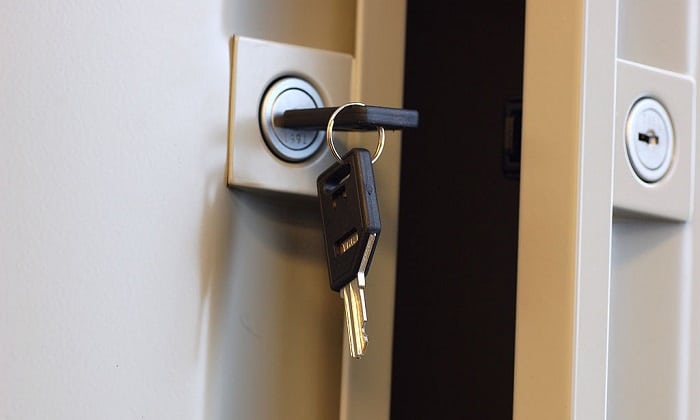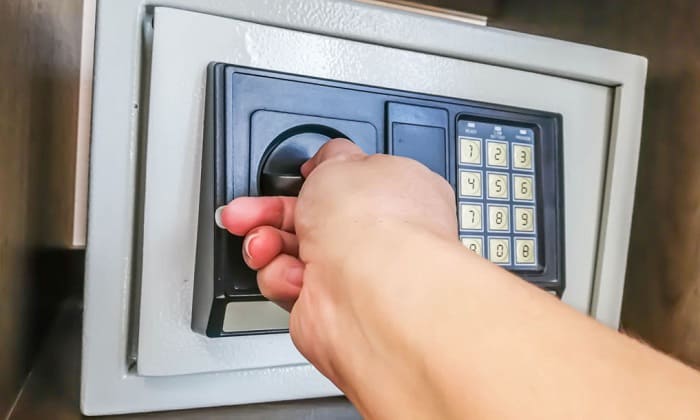Among multiple locking systems on the market to consider, a brand new user would feel overwhelmed in selecting a cabinet door lock. So how to lock cabinet doors when you know so little about different lock types at the moment?
The good thing about cabinet doors is that a door is always available to attach your lock to and the ample surfaces that allow you to secure the lock’s latching component.
This means you can use several other items to lock cabinet doors, and feel free to choose whichever suits the budget. This article will offer a list of nice cabinet lock options to work with any style and requirement.
Table of Contents
What You Need to Follow This Tutorial
You can choose one of these types for locking cabinet doors:
- Cam lock
- Hidden lock
- Magnetic lock
- Plunger lock
- Showcase lock
With each type, below is the best way to lock cabinets.
Step by Step Instructions
Because each mentioned type of lock serves different purposes, read through these guides to lock kitchen cabinets at home.
1. How to use a Cam lock
The most common way to secure cabinet doors is to use a cam lock. This type of lock is affordable, with various models to choose from, and widely compatible with different door types. Those reasons are why it is the standard type recommended for home applications.
During the installation of a cam lock:
- The lock catch should be mounted on the cabinet door interior (also known as a cam lock strike), so the cam can latch to as you close the door.
- If you are not a fan of using keys, you can consider buying a combination cam lock. Dial a code in it before you turn the lock.
Also, we have another solution for those who own 2 cabinet doors that close together without a vertical bar in between. If a single lock is installed for both of these doors, you need to:
- Ensure one of the door sides is permanently fixed.
- Or get a locking device that automatically locks and unlocks both doors just from a single installed lock.
There is a smart and more advanced version of this cam lock to choose from – a keyless electronic model. It works well with a dual door latch to create a rugged duo for heavy and commercial applications, such as office or school use.
2. Hidden lock
We can choose among two hidden cabinet locks, either the magnetic or the PIN-pad-controlled units. Some of the latter lock’s benefits for your cabinet door protection are:
- Keyless operation with a PIN code.
- Invisible from the outside of your cabinet.
- Allows a quick and easy installation process.
- Requires no large hole drilling.
- The PIN pad can be mounted at a short distance (15 inches or so) from the lock.
- Users should ensure that their locks run on an optional power.
3. Child-safety lock types
- Magnetic lock
Magnetic locks are gaining popularity as practical cabinet locking tools for child safety. Most homeowners install magnetic locks to secure their kitchen or bathroom cabinet doors from being accidentally opened by their kids.
You can install it without hassle, as it does not always require drilling and complicated steps. Besides, these locks can work without a key for opening.
More importantly, it is hidden, so it will not ruin the good look of your cabinets if you care about such a thing.
How does a magnetic lock work, then?
Well, this lock does not need a key, as it uses a strong magnet. As the magnet retracts this latch, the door opens widely.
- Plunger lock
This type of lock is also known as a push-button lock. If your kitchen has double sliding wooden drawers in front of and behind each other, you should opt for a plunger lock.
When you push the lock button, its plunger rod (located in the back) will slide back. Then your plunger lock will be locked into position until you use a key. Hence, the plunger rod can slide the rear hole of the door keep it shut.
Due to this mechanism, it is perfect for sliding wooden cabinet doors.
- Showcase lock
Whenever you need to lock display cases made of glass, showcase locks would be the perfect pick.
This type of lock attaches to the glass surface with a wide range of selections. We can choose one after considering the configuration of our glass cabinet.
In some cases, people secure this lock to the glass with a pressure screw, and epoxying them onto this surface is another method.
We prefer the epoxy version because it dispenses pressure/force and protects the glass from easy breakage. Still, this line has been discontinued in manufacturing several years ago.
Since you can easily break the glass, most showcase locks do not provide much security. They are built mainly to prevent customers from taking away the contents of this glass display unnoticed. However, high-end markets can offer highly protective glass locks for jewelry stores.
In addition, we have some other cabinet lock related tips for your reference, such as way to remove a file cabinet lock without a key, a detailed guide to locking a file cabinet with no lock and picking a filing cabinet lock. Hope these tutorials help you.
Summary
That was the basic information about these common lock types for cabinet door security. We believe we have made a helpful distribution to your final purchase decision, no matter which lock you choose to buy in the end.
So what is your opinion on this article about how to lock cabinet doors? Let us know what you think in the comment section. Do not forget to spread the word with friends and family via social media for their convenience as well!
Thank you for reading.

I am the last member to join Revolar and might be just the luckiest to work with dedicated people like Teddy and John. Our team has established a process where my only job is writing the best content to deliver incredible ideas and guides.




